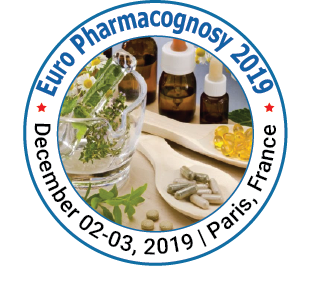
Alicia Reyes-Arellano
Alicia Reyes-Arellano
Title: Design, synthesis and evaluation of 3-substituted quinoxalin-2(1H)-one derivatives as quorum sensing inhibitors compounds in gram-negative bacteria
Biography
Biography: Alicia Reyes-Arellano
Abstract
The genus Aeromonas is constituted by waterborne gram-negative bacteria that live in aquatic environments, including ground water and chlorinated drinking water. Aeromonas caviae is a specific species considered pathogenic to humans because of causing intra- and extra-intestinal infections, and other severe illnesses, such as septicemia, wounds infection, and respiratory tract disease. The Aeromonas mechanism of pathogenicity is not yet completely understood, but what is known and studied is the significant role of biofilm-formation, undertaken by these types of bacteria. The biofilm structure is a tight association of microorganisms growing on surfaces and embedded in a matrix of extracellular polymeric substance, which exacerbates human infection, by hindering the access of antibiotics to the bacteria. Biofilm constitute an intricate interplay between physical and chemical factors, and have physiological and genetic properties such as gene transfer and gene activation through bacterial communication known as quorum sensing. The quorum sensing communication system is based on small molecules called autoinducers, which trigger biofilm formation. This small molecule signaling construct provides the target for a pharmaceutical chemistry intervention. With the design and synthesis of quorum sensing inhibitors small molecules, the bacteria communication, essential for biofilm-formation, can be blocked. As a result, the pathogenic development is dismantled and additionally the access of antibiotics is promoted. In our group we were able to design and synthesis a pilot series of 3-substituted quinoxalin-2(1H)-one derivatives as anti-quorum sensing compounds. We synthesized these compounds in a two-step synthesis path, initiated by a Grignard reaction to synthesize 2-keto ethyl ester intermediates and finalized in a second condensation step with 2, 3-diamino phenyl. Biofilm-formation was evaluated in transparent flat bottom 24 well plates with a concentration of Aeromonas caviae Sch3 of 2.0 McFarland. At 100 μM compound concentration the best quorum sensing inhibitors molecule Cpd8 reduced the biofilm-formation by 60%. At lower concentrations of 10 and 1 μM reduction of biofilm-formation was still observed. The 3-substituted quinoxalin-2(1H)-one derivatives also was tested in C. violaceum and it was confirmed the quorum sensing activity.

